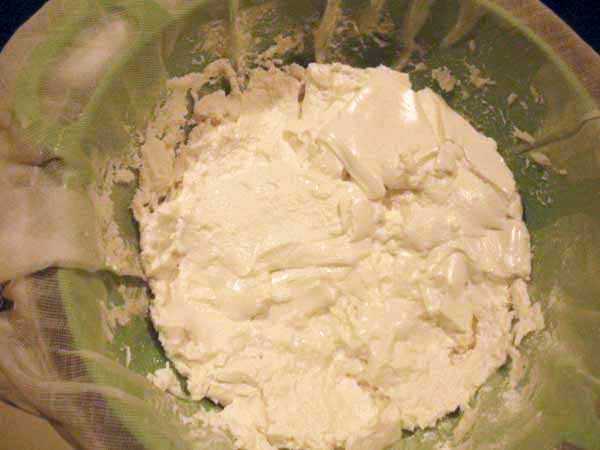Making cheese at home: a lesson in alchemy
The process of taking liquid milk and converting it to cheese has always struck me as something a little bit magical. No matter how much I learn about the science of cheese making, it never loses its mystical appeal. My limited efforts to make cheese at home have fueled this sense of mystery, because despite all efforts to control and contain my little milk bucket ecosystem, it never fails to have plans of its own. The beautiful thing is, though those plans may yield a result that is unexpected, they rarely yield something poisonous or inedible. Pretty good for a novice in any art.
This week, I had the privilege of making cheese with someone who knows a lot more about it than I do. This person is Josh Carter, Canton resident and experienced home cheesemaker. His process involves great care for sanitation and cleanliness, treating the milk, bacterial cultures, and rennet with tremendous care. He cites the variability of flavor, texture, and appearance of the final product as tremendous sources of inspiration. Unlike a commercial cheesemaker, a home cheesemaker is not bound by consumer demand for consistency. Variability is inevitable and an intriguing byproduct of the cheesemaker’s efforts to manipulate a living system. By changing temperature, humidity, air space between curds in the mold, etc., a true artisan creates an environment that allows certain types of organisms to thrive, thereby outcompeting undesirables and preventing spoilage of flavor.
One of my favorite parts of the process was also the most surprising. I typically think of cheesemaking as a sterile process dependent upon strict adherence to recipes in order to avoid the ever-looming threat of spoilage. Josh takes a deliberate yet free-form approach, favoring the use of formulas and ratios of ingredients rather than recipes to account for variations in milk chemistry and flavor.
When the time came to fill the cheese molds, we sterilized the equipment in boiling water and meticulously set up a clean workspace. Then, Josh proceeded to roll up his sleeves and reach into the pot of cut curds and warm whey with his bare hand. He scooped the curds up and into the presses. The curds were warm and squiggly. They were soft and slightly bouncy, and it felt like the product of some kind of alchemy.
As with every fermented food product, the process of making cheese is a complex effort to mitigate the success of certain undesirable microorganisms while encouraging the growth of others. By adding salt or increasing the acid content of the milk, changing the temperature and humidity of the environment in which the cheese is aged, the cheese maker tries to both control and encourage an ecosystem to develop in a particular way. This requires a delicate balance of attention to detail and flexibility. Raw milk creates room for variability, as the organisms within it may differ with every batch of cheese, changing the minute details of the process and ultimately the flavor.
While it is not hard to make a cheese at home, it is, as with so many other culinary endeavors, an art to make a good cheese at home. I like to balance my personal experiments with much enjoyment of others’ perfected cheese. There are very good fresh cheeses being made in The North Country with pasteurized milk. Nettle Meadow Farm of Warrensburg and Asgaard Farm of Saranac Lake both make delicious goat cheeses and are available for sale throughout the Adirondacks and North Country.









Making cheese & butter at home with milk off the farm…a growth on the farm for artisnal cheese & butter, would be a god -send savings for the small farmer, trick is you cannot be too big and either too small, not so capaital intensive as just milking cows & shipping milk down the road to processors..Feeding you local market with good tasting butter & cheese. You see this in Quebec, europe, isles of Jersey & gurnsey, not to mention Scotland & Ireland too.